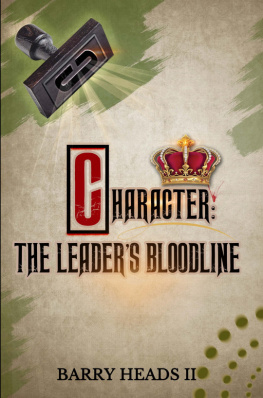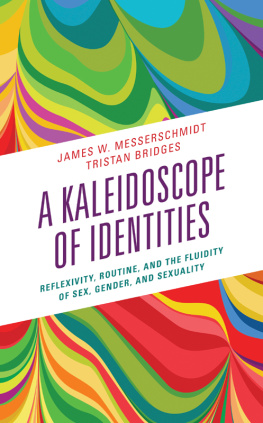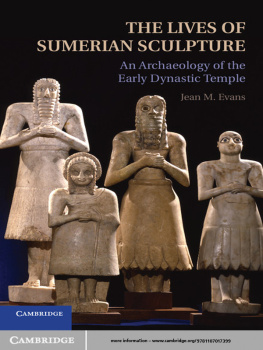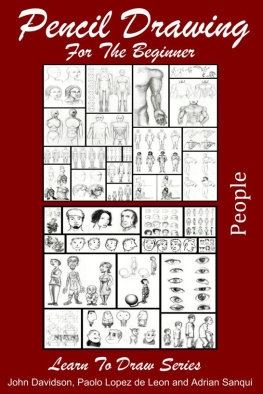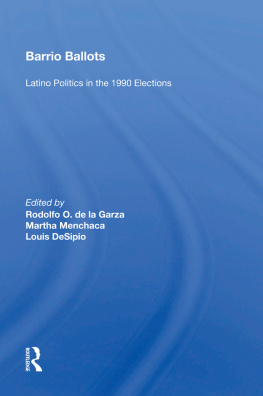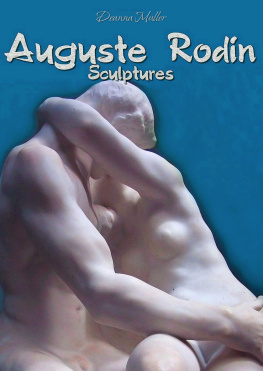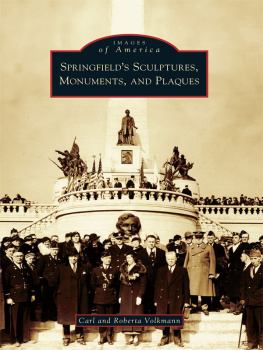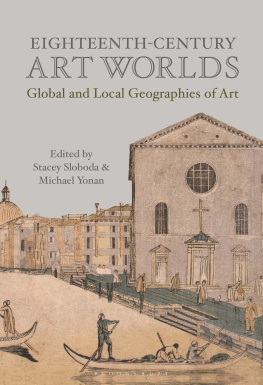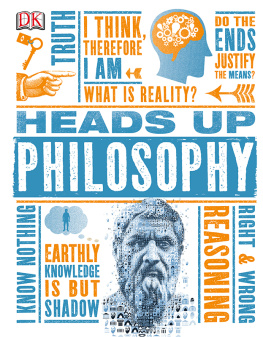Messerschmidts Character Heads
This book examines a famous series of sculptures by the German artist Franz Xaver Messerschmidt (17361783) known as his Character Heads. These are busts of human heads, highly unconventional for their time, representing strange, often inexplicable facial expressions. Scholars have struggled to explain these works of art. Some have said that Messerschmidt was insane, while others suggested that he tried to illustrate some sort of intellectual system. Michael Yonan argues that these sculptures are simultaneously explorations of arts power and also critiques of the aesthetic limits that would be placed on that power.
Michael Yonan is associate professor of art history at the University of MissouriColumbia, USA. He is a specialist in eighteenth-century European art and material culture.
Studies in Art Historiography
Series Editor: Richard Woodfield, University of Birmingham
The aim of this series is to support and promote the study of the history and practice of art historical writing focusing on its institutional and conceptual foundations, from the past to the present day in all areas and all periods. Besides addressing the major innovators of the past it also encourages re-thinking ways in which the subject may be written in the future. It ignores the disciplinary boundaries imposed by the Anglophone expression art history and allows and encourages the full range of enquiry that encompasses the visual arts in its broadest sense as well as topics falling within archaeology, anthropology, ethnography, and other specialist disciplines and approaches.
Architecture and the Late Ottoman Historical Imaginary
Reconfiguring the Architectural Past in a Modernizing Empire
Ahmet A. Ersoy
Painting and Narrative in France, from Poussin to Gauguin
Edited by Peter Cooke and Nina Lbbren
Pictures-within-Pictures in Nineteenth-Century Britain
Catherine Roach
The Academy of San Carlos and Mexican Art History
Politics, History, and Art in Nineteenth-Century Mexico
Ray Hernandez-Duran
Sculptural Materiality in the Age of Conceptualism
International Experiments in Italy
Marin R. Sullivan
Comparativism in Art History
Edited by Ja Elsner
Constructing the Viennese Modern Body
Art, Hysteria and the Puppet
Nathan J. Timpano
Messerschmidts Character Heads
Maddening Sculpture and the Writing of Art History
Michael Yonan
Messerschmidts Character Heads
Maddening Sculpture and the Writing of Art History
Michael Yonan

First published 2018
by Routledge
711 Third Avenue, New York, NY 10017
and by Routledge
2 Park Square, Milton Park, Abingdon, Oxon OX14 4RN
Routledge is an imprint of the Taylor & Francis Group, an informa business
2018 Taylor & Francis
The right of Michael Yonan to be identified as author of this work has been asserted by him in accordance with sections 77 and 78 of the Copyright, Designs and Patents Act 1988.
All rights reserved. No part of this book may be reprinted or reproduced or utilised in any form or by any electronic, mechanical, or other means, now known or hereafter invented, including photocopying and recording, or in any information storage or retrieval system, without permission in writing from the publishers.
Trademark notice: Product or corporate names may be trademarks or registered trademarks, and are used only for identification and explanation without intent to infringe.
Library of Congress Cataloging in Publication Data
A catalog record for this book has been requested
ISBN: 978-1-138-21343-2 (hbk)
ISBN: 978-1-315-44840-4 (ebk)
Typeset in Sabon
by Out of House Publishing
For Mike Wells
Contents
Perhaps fittingly, this book about an unusual artist has unusual origins. It had its beginnings inof all placesLas Vegas, where I first presented some thoughts about Messerschmidt in a panel on Faces at the 2005 meeting of the American Society for Eighteenth-Century Studies. Since then, my desire to understand his Character Heads and their interpretation has led me to diverse locales, pushed me into unfamiliar intellectual terrains, and occasionally thrown me into controversy. The resulting book has been challenging to write, which means that the support of friends and colleagues has been more than usually welcome.
First and foremost, thanks to Paula Radisich for chairing that ASECS session. I am lucky as well to have heard the thought-provoking contributions of my fellow panelists Philippe Bordes, Kathleen Nicholson, and Barbara Maria Stafford, who collectively jumpstarted my thinking about this subject. Staffords scholarship on eighteenth-century physiognomy often guided me through the complex idea worlds of Lavater and Lichtenberg. Jennifer Germann, Joan Greer, Ben Harvey, Christina Lindeman, Meredith Martin, Heather McPherson, Julie-Anne Plax, Wendy Wassyng Roworth, Stacey Sloboda, Kristel Smentek, James van Dyke, and Tara Zanardi offered encouragement as the project took shape. I will be forever grateful to Julia Simon, who supported the publication of an article in Eighteenth-Century Studies in which I sketched out some initial ideas. Likewise I thank Elizabeth Mansfield and Kelly Malone for their comments on an essay containing some parts of , which appeared in the volume Seeing Satire in the Eighteenth Century (Oxford: Voltaire Foundation, 2013).
My thinking about Messerschmidt deepened substantially while I was a research fellow at the Swedish Collegium for Advanced Study, Uppsala, a unique and wonderful institution. Despite a connection to Sweden through his mentor Martin van Meytens, Messerschmidt never traveled so far north. That was very much his mistake! I thank Bjrn Wittrock, Barbro Klein, Mikael Ahlund, Carolina Brown Ahlund, Maris Gillette, Mirja Hartimo, Linda Hinners, Petter Johansson, Jari Kaukua, and Prtel Piirime for many great discussions. Thanks as well to the entire SCAS staff for welcoming me and supporting my research with calm Swedish assurance. I am likewise grateful to the University of Missouri Research Board for awarding me a Provosts Research Leave in 20132014, which enabled me to write the manuscript.
Closer to Messerschmidts home, I would like to thank Mgr. Miroslava Hivkov of the former Archv hlavnho mesta SR Bratislavy, Slovakia, for helping me study papers housed there. In Vienna, the sterreichische Galerie Belvedere has been unfailingly helpful in assisting my research and in a real sense inspired it. I would also like to thank Niki Conley, Sean Franzel, Jongwoo Jeremy Kim, Norman Land, Susan Langdon, Claire Mdl, Martin Mdl, Daryl Maude, Dawn McInnis, Christopher Reed, Anne Rudloff Stanton, Drew Wallenberg, and Larry Wolff, and the audiences from Mississippi to Prague who have listened to and commented on my arguments.
At the publication stage, this book owes its existence to Margaret Michniewicz, who judiciously guided it through its initial reviews, and later to Isabella Vitti and Julia Michaelis, who stewarded it to completion with care. Thanks to them all. Richard Woodfield has done so much to promote the study of art historiography that that alone would earn him my gratitude, but he also commented on aspects of the manuscript with great discernment. I am fortunate to have benefited from his editorship of the Studies in Art Historiography series.
My final thanks go to two important people in my life. Mary Sheriff was a cherished teacher, mentor, colleague, travel companion, and friend to me for more than 20 years. As I finished writing this book, it became clear how much it owes to her, how much the spirit of her thinking floats through its pages. My appreciation for all that she brought to my life is beyond the power of words. Luck indeed. Mike Wells is that rarest of things: a true friend, someone who has appreciated me, distracted me, and at the right moments ignored me, but he has always grounded me with reminders to keep things in perspective. Ive been fortunate to have access to his counsel, his wit, his openheartedness, and his puppies. A major book lover himself, I dedicate this one to him.



